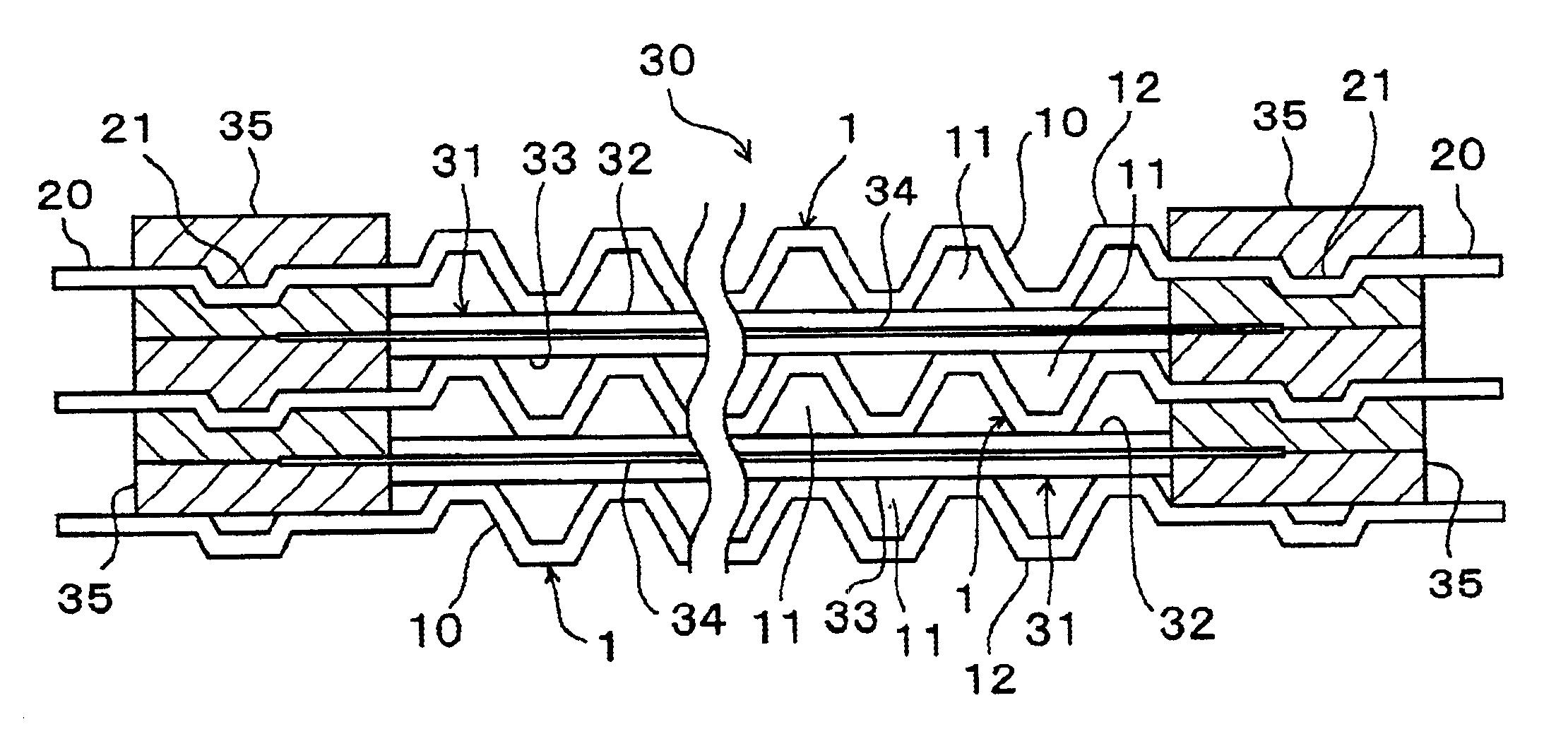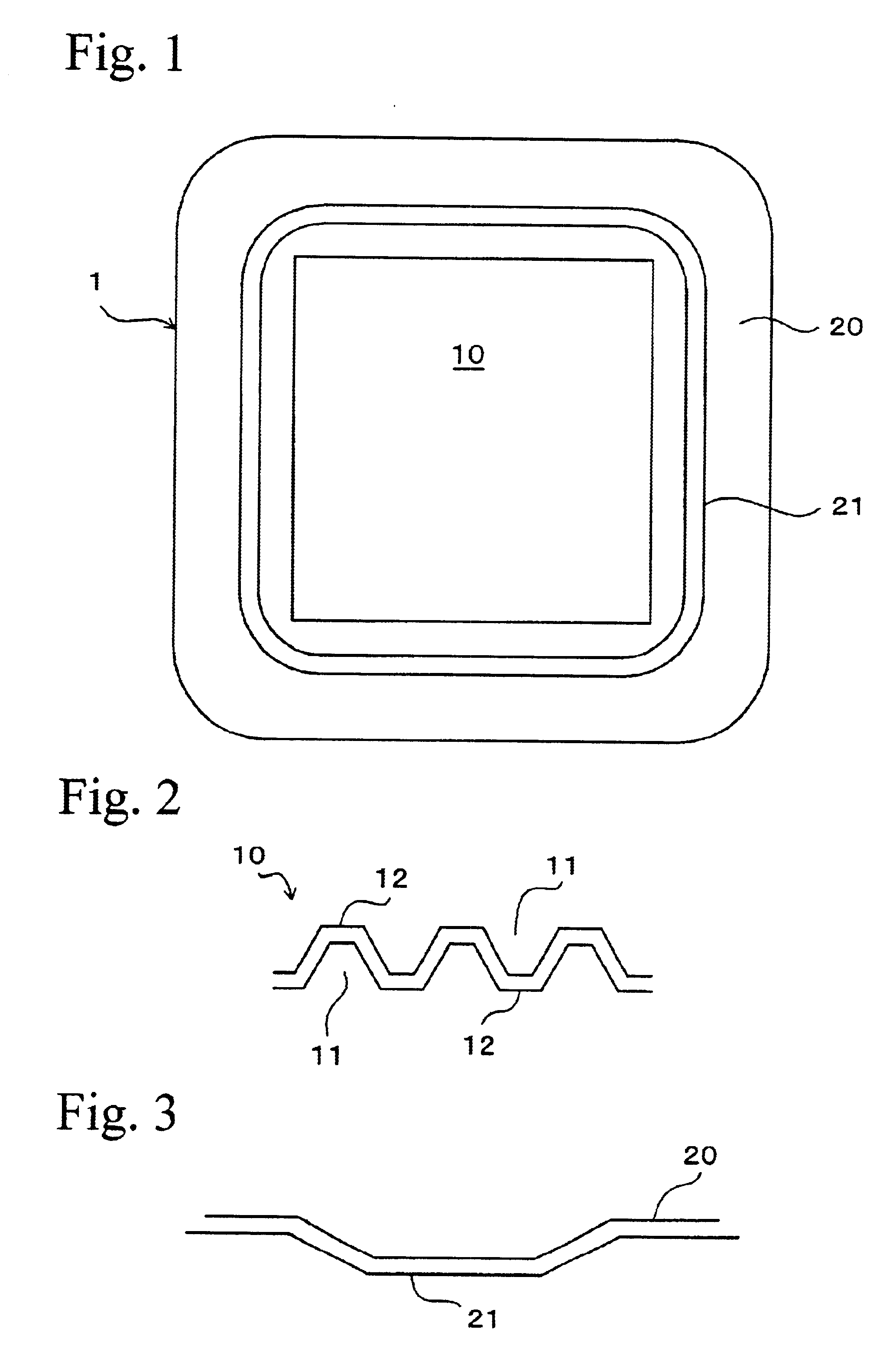Separator for fuel cell and fuel cell
a fuel cell and separator technology, applied in the direction of cell components, cell component details, electrochemical generators, etc., can solve the problems of high contact resistance, subsequent reduction of generated voltage, warp in separator after molding process, etc., to simplify the assembling process, improve gas sealing properties, and stabilize power generation performance
- Summary
- Abstract
- Description
- Claims
- Application Information
AI Technical Summary
Benefits of technology
Problems solved by technology
Method used
Image
Examples
examples
Next, an explanation will be given of examples of the present invention.
(1) Preparation of a Separator
Separators of examples with varied combinations of the width and depth of the rib as shown in Table 1 were obtained by press forming thin plates made of stainless steel in a regular square shape having 86 mm in one side and 0.2 mm in thickness. These separators were formed in the same manner as shown in FIG. 1, and the current collector unit had 60 mm in one side, 1.5 mm in the width of the gas passage and 1.0 mm in the depth of the gas passage, and a rib was formed on a portion extending 2.0 mm from the edge of the current collector unit in a regular square shape along the entire circumference of the circumferential portion. Moreover, a separator was also formed in the same manner as examples except that no rib was formed, as a comparative example.
TABLE 1Amount of warp in separators (unit mm)Depth of rib (mm)Width of rib (mm)0.10.20.30.40.50.50.980.960.950.930.910.80.560.520.490.46...
PUM
| Property | Measurement | Unit |
|---|---|---|
| width | aaaaa | aaaaa |
| length | aaaaa | aaaaa |
| width | aaaaa | aaaaa |
Abstract
Description
Claims
Application Information
 Login to View More
Login to View More - R&D
- Intellectual Property
- Life Sciences
- Materials
- Tech Scout
- Unparalleled Data Quality
- Higher Quality Content
- 60% Fewer Hallucinations
Browse by: Latest US Patents, China's latest patents, Technical Efficacy Thesaurus, Application Domain, Technology Topic, Popular Technical Reports.
© 2025 PatSnap. All rights reserved.Legal|Privacy policy|Modern Slavery Act Transparency Statement|Sitemap|About US| Contact US: help@patsnap.com



